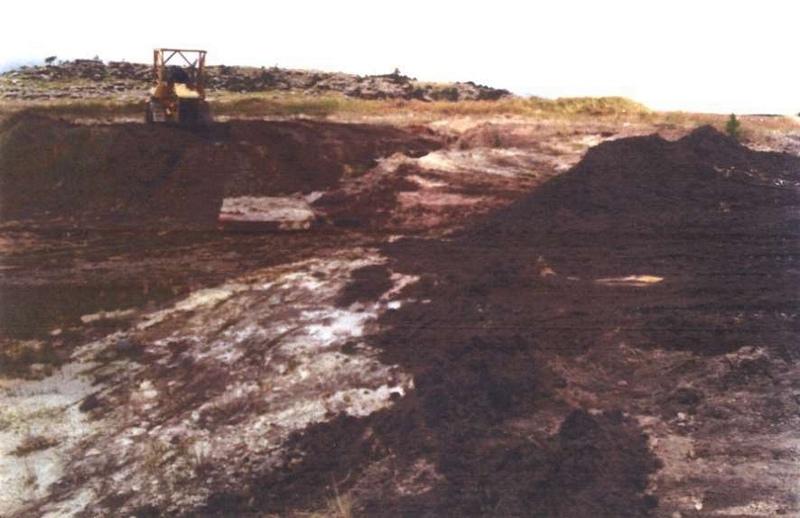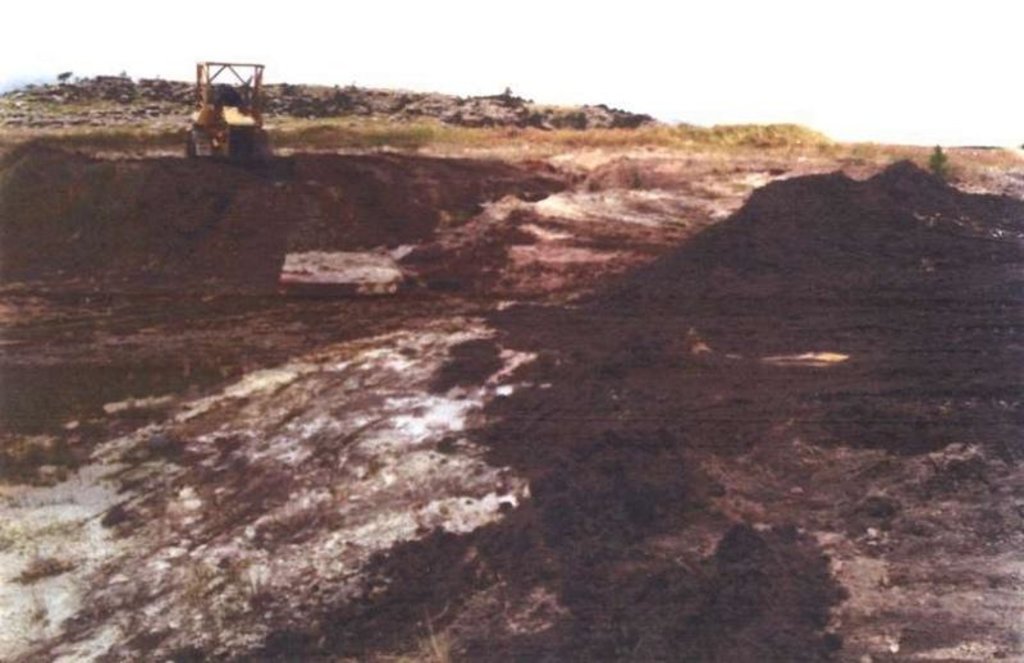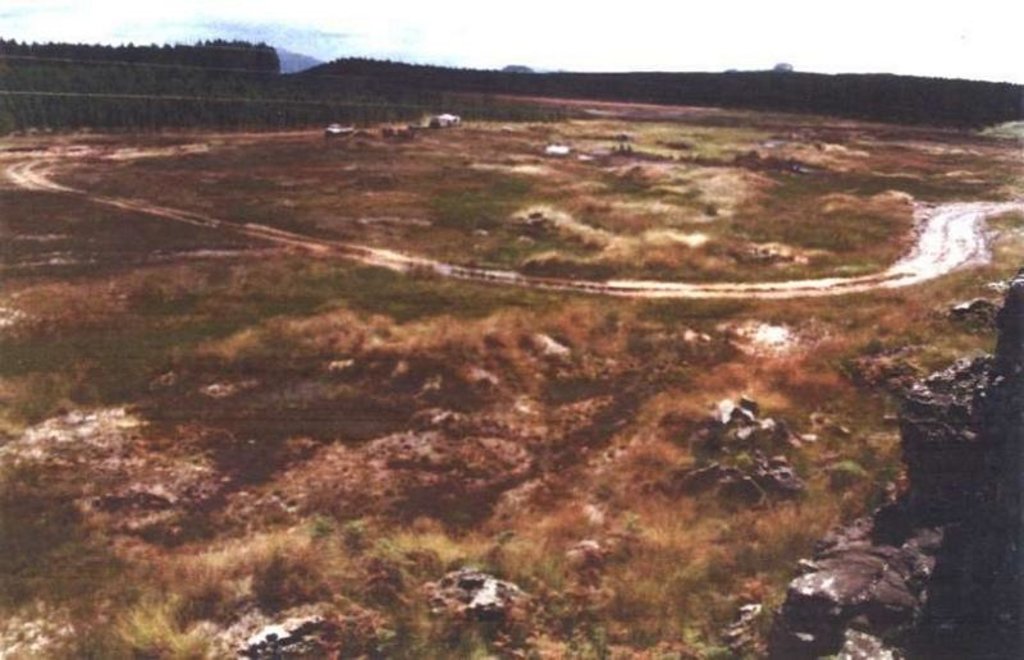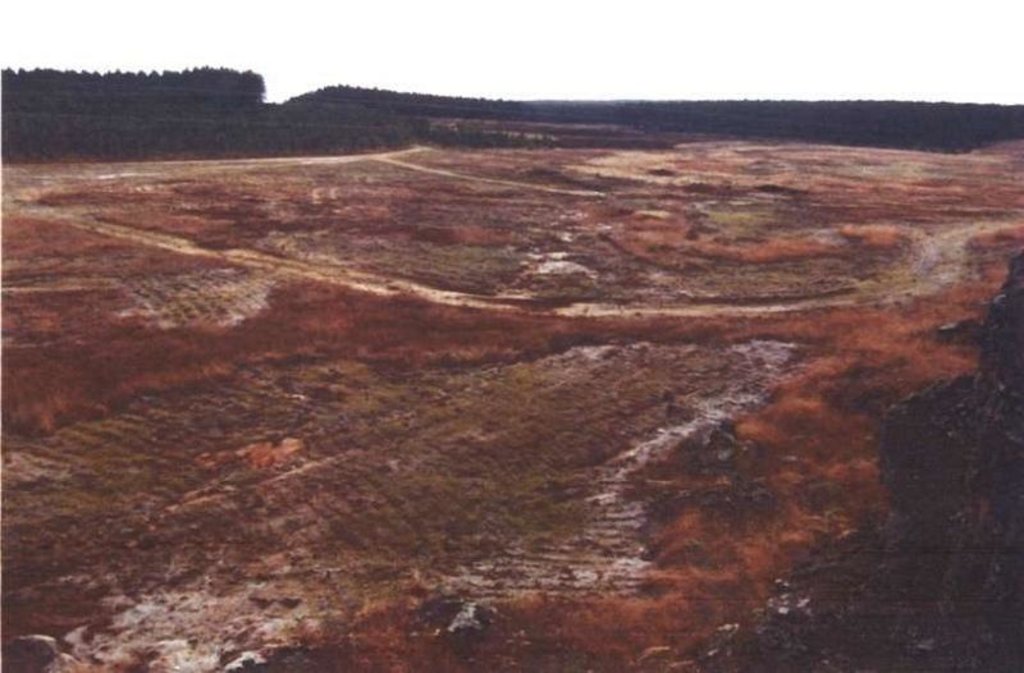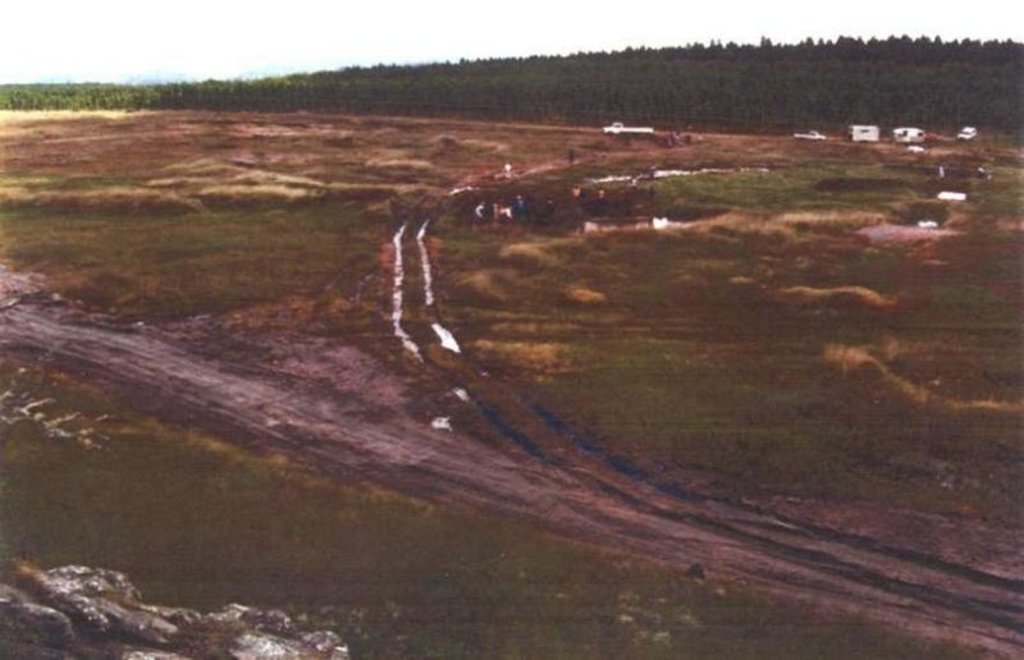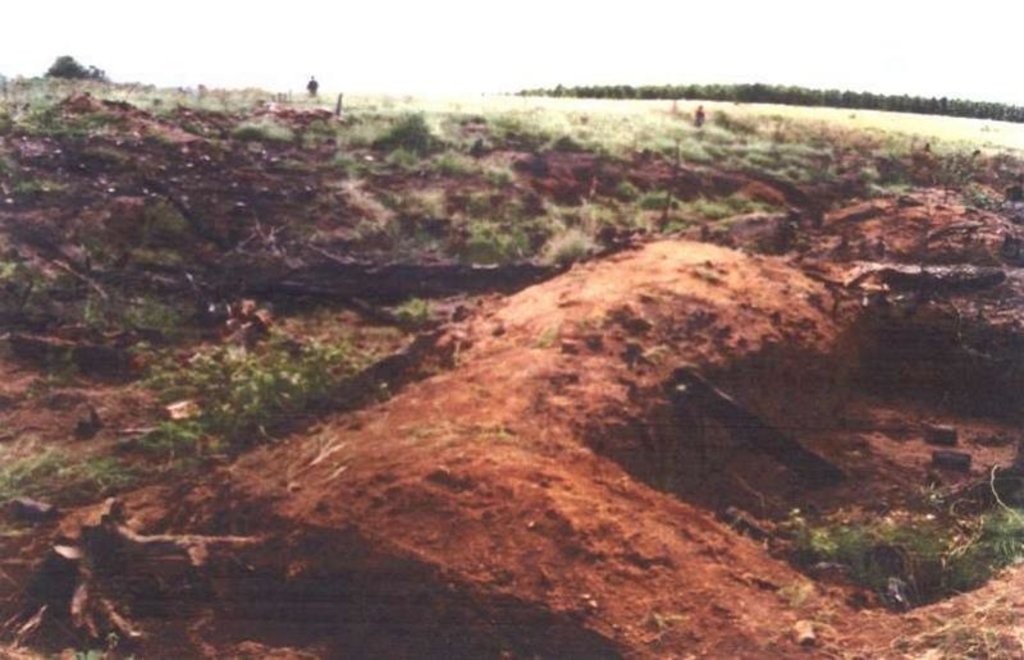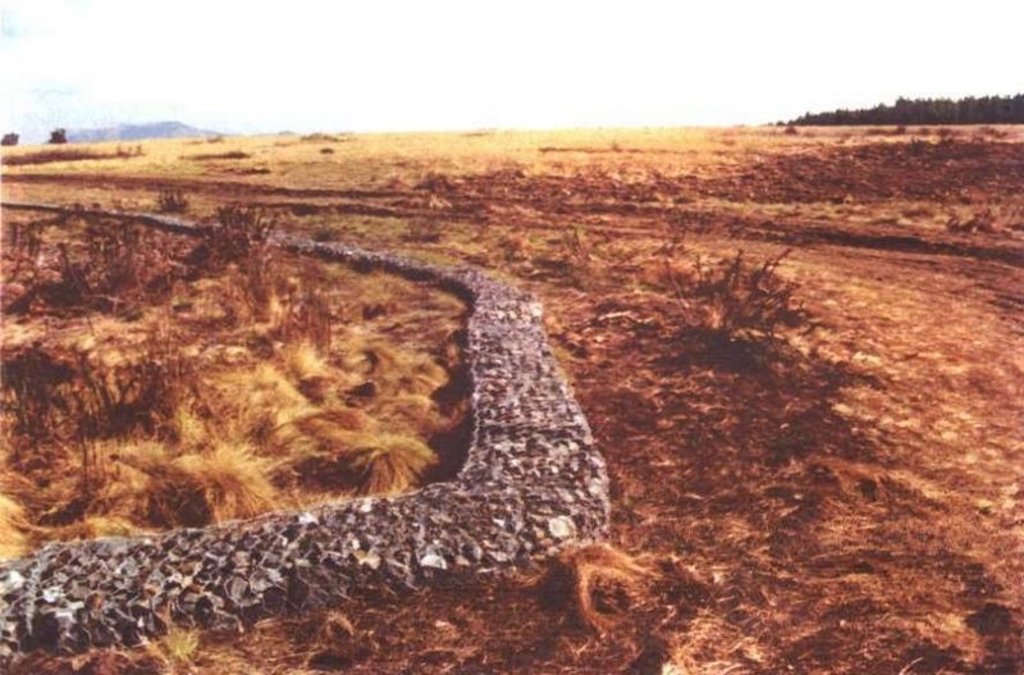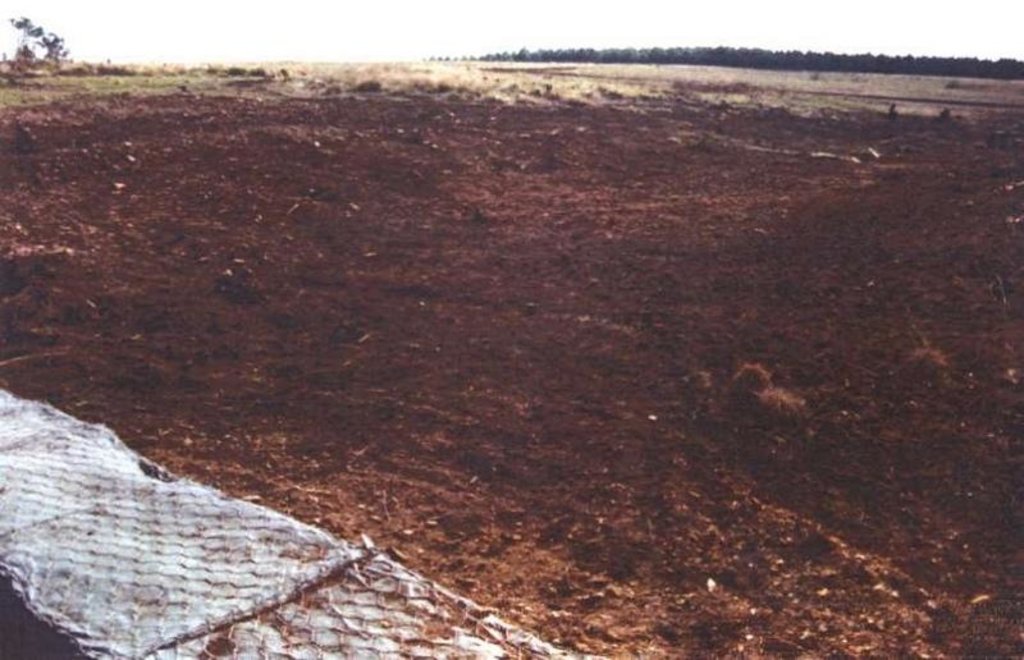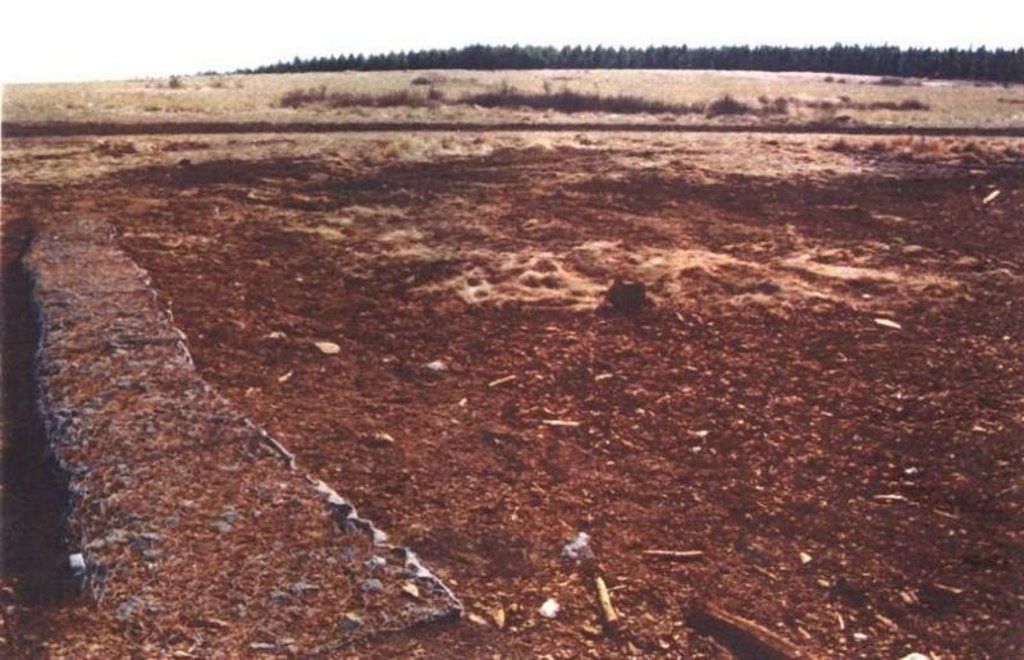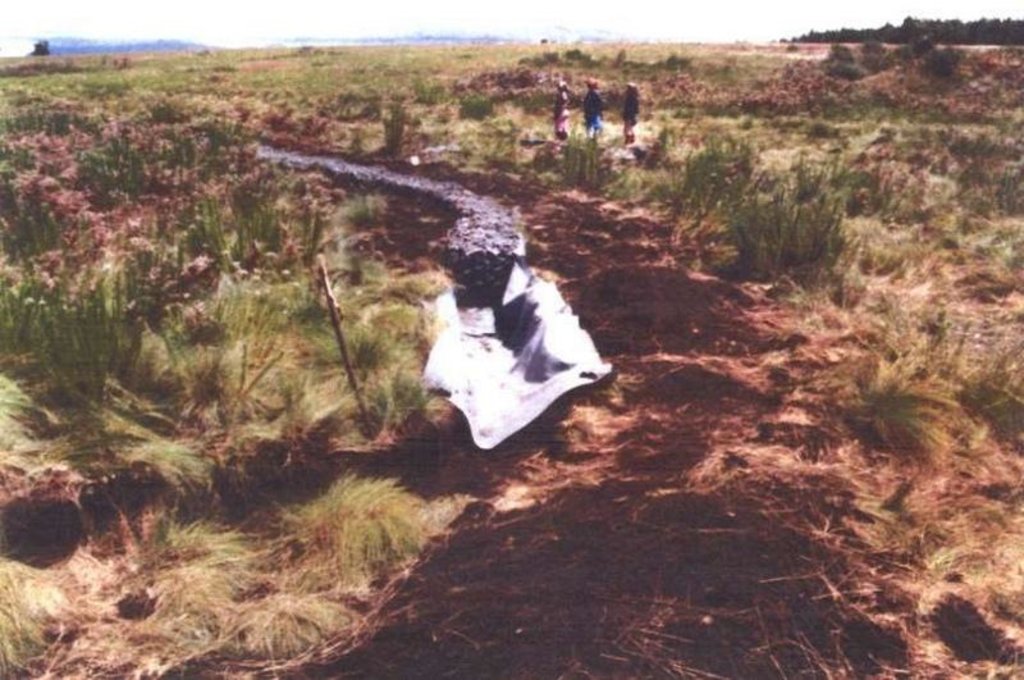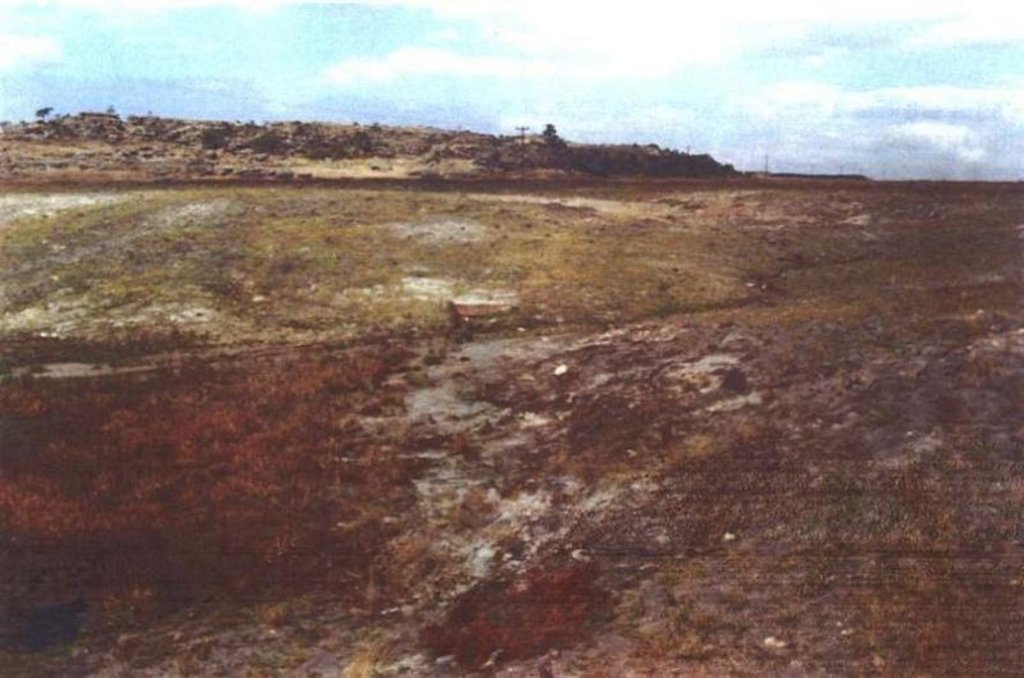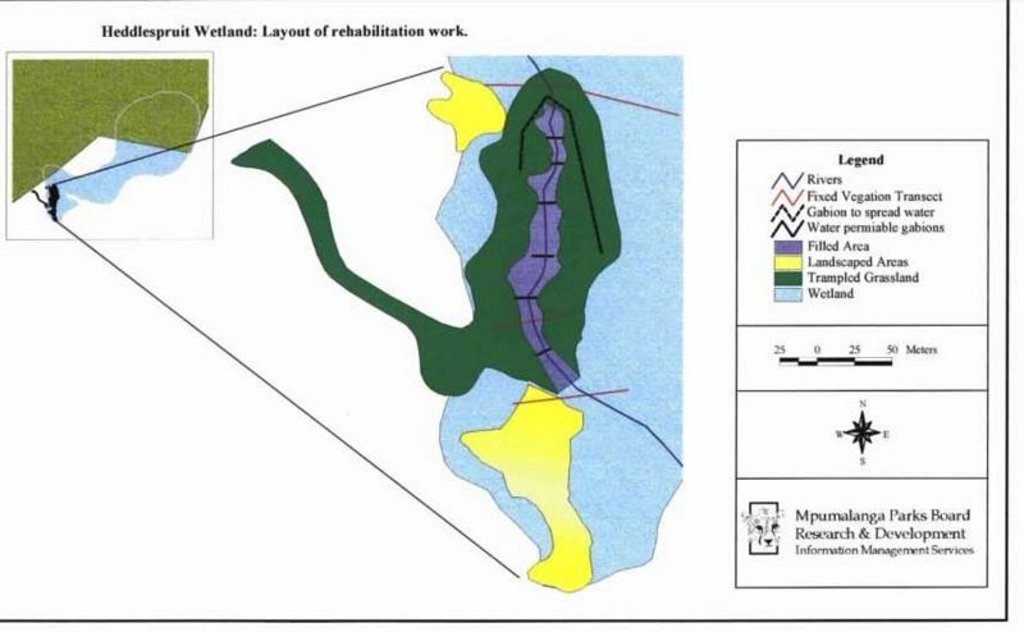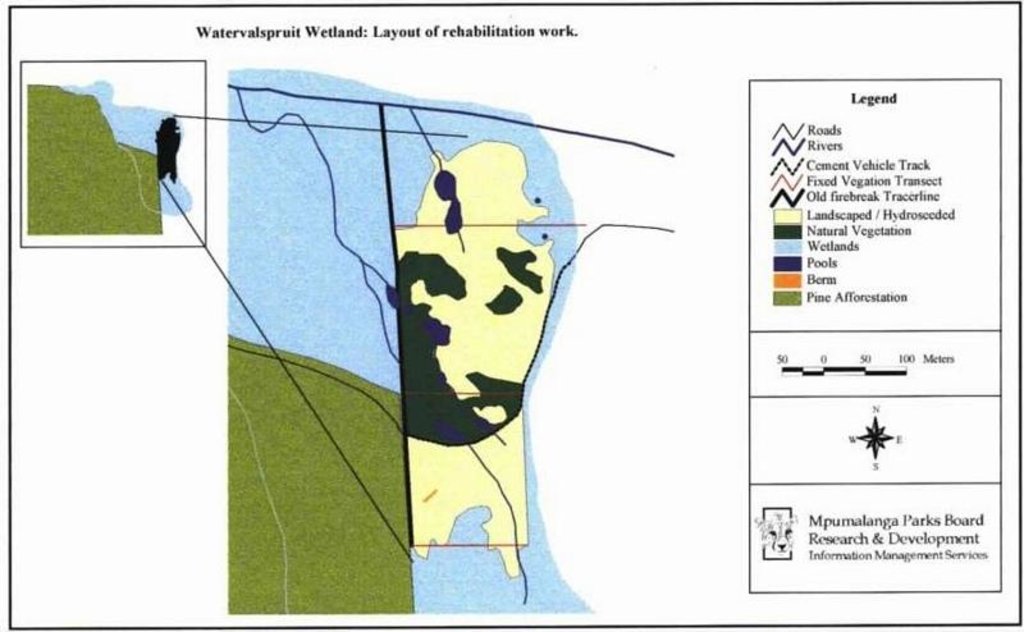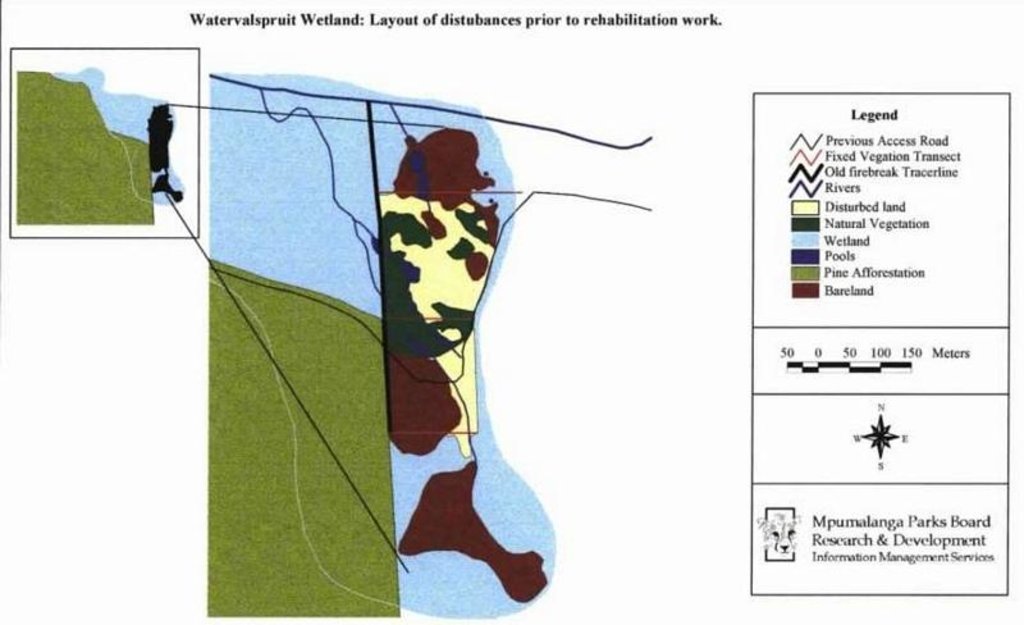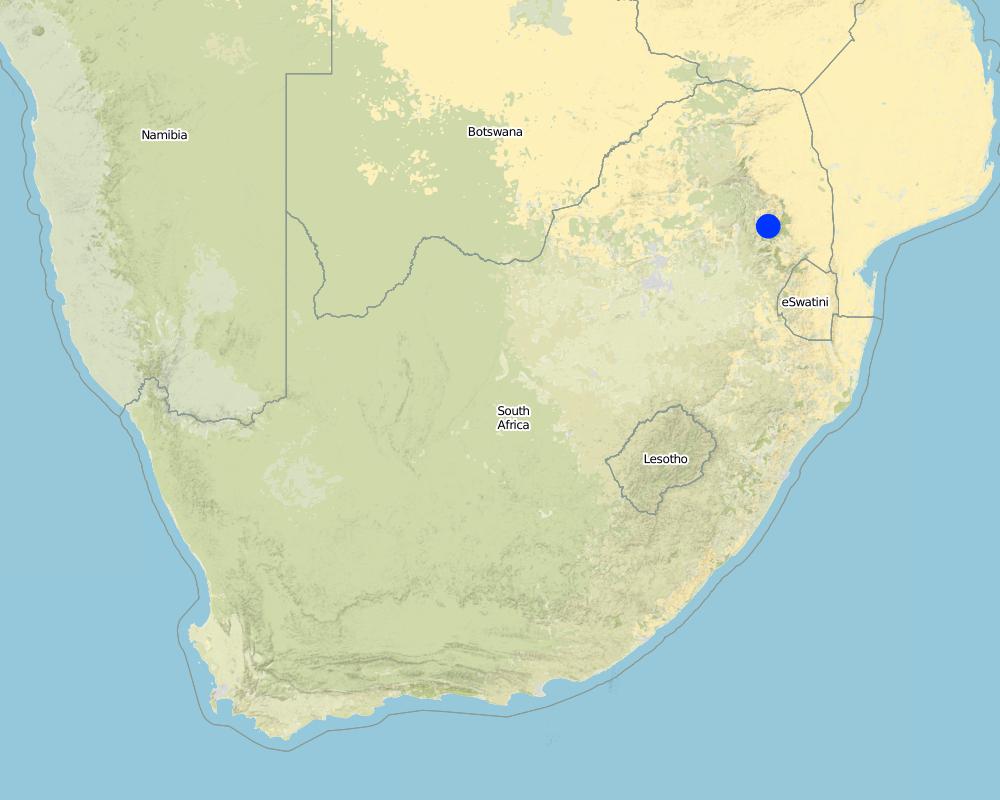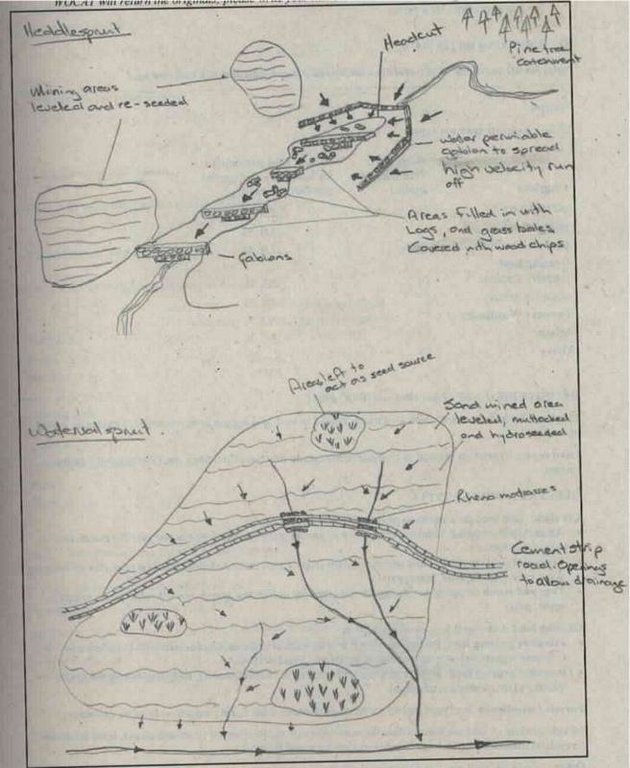Wetland rehabilitation [Afrique du Sud]
- Création :
- Mise à jour :
- Compilateur : Unknown User
- Rédacteur : –
- Examinateurs : David Streiff, Alexandra Gavilano
technologies_1377 - Afrique du Sud
Voir les sections
Développer tout Réduire tout1. Informations générales
1.2 Coordonnées des personnes-ressources et des institutions impliquées dans l'évaluation et la documentation de la Technologie
Personne(s)-ressource(s) clé(s)
Spécialiste GDT:
Bronkhorst Frik
Mpumalanga Parks Board
Afrique du Sud
Nom du ou des institutions qui ont facilité la documentation/ l'évaluation de la Technologie (si pertinent)
Mpumalanga Tourism and Parks Authority Board (MTPA) - Afrique du Sud1.3 Conditions relatives à l'utilisation par WOCAT des données documentées
Le compilateur et la(les) personne(s) ressource(s) acceptent les conditions relatives à l'utilisation par WOCAT des données documentées:
Oui
1.5 Référence au(x) Questionnaires sur les Approches de GDT (documentées au moyen de WOCAT)
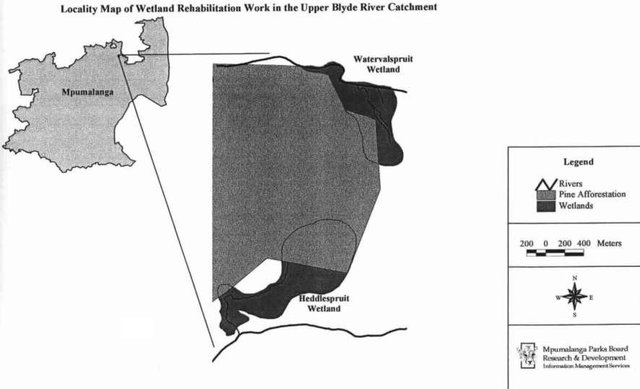
Working for Water Wetland rehabilitation [Afrique du Sud]
To improve the quality & quantity of water production and biodiversity in the Blyde River catchment area.
- Compilateur : Unknown User
2. Description de la Technologie de GDT
2.1 Courte description de la Technologie
Définition de la Technologie:
To rehabilitate/stabilise distorted wetlands as close as possible to its original state/function.
2.2 Description détaillée de la Technologie
Description:
Two wetland rehabilitation sites that are part of a large wetland area (15 and 10ha).
Purpose of the Technology: The purpose of the rehabilitation work was to stabilise, landscape and re-vegetate distorted areas to again fulfil their original function in the catchment.
Establishment / maintenance activities and inputs: Maintenance included follow-up on re-seeding distorted areas and alien plant control (cut down plants and treads strips with roundup). Structure maintenance (such as gabions, roads) is also done.
Fire management to protect and manage the area of rehabilitation until such time as it has proved to be stabilised. Leave for ± 3 years before considering burning.
2.3 Photos de la Technologie
2.5 Pays/ région/ lieux où la Technologie a été appliquée et qui sont couverts par cette évaluation
Pays:
Afrique du Sud
Région/ Etat/ Province:
Mpumalanga
Autres spécifications du lieu:
Mpumalanga
Spécifiez la diffusion de la Technologie:
- répartie uniformément sur une zone
Si la Technologie est uniformément répartie sur une zone, précisez la superficie couverte (en km2):
0,3
S'il n'existe pas d'informations exactes sur la superficie, indiquez les limites approximatives de la zone couverte:
- 0,1-1 km2
Commentaires:
Total area covered by the SLM Technology is 0.3 km2.
Wetland rehabilitation work has been executed on two wetlands in the upper catchment of the Blyde River in Mpumalanga.
Map
×2.6 Date de mise en œuvre de la Technologie
Si l'année précise est inconnue, indiquez la date approximative: :
- il y a moins de 10 ans (récemment)
2.7 Introduction de la Technologie
Spécifiez comment la Technologie a été introduite: :
- par le biais de projets/ d'interventions extérieures
Commentaires (type de projet, etc.) :
Subjective inputs/discussions with specialists in variety of disciplines (scientist, botanists, hydrologists, managers, ecologists)
3. Classification de la Technologie de GDT
3.1 Principal(aux) objectif(s) de la Technologie
- préserver l'écosystème
3.2 Type(s) actuel(s) d'utilisation des terres, là où la Technologie est appliquée

Pâturages
Pâturage extensif:
- Ranching
- game
Commentaires:
Major land use problems (compiler’s opinion): Afforestation: Pine plantations destroys diversity, also has a major effect on quality & quantity of water run-off, mining opencast activities
Major land use problems (land users’ perception): Production of wood/timber, job creation
Ranching: Game occur natural in this area/nature reserve
Grazingland comments: Area in which these two wetlands are situated is proclaimed conservation land. The aim is to manage the area in an as natural as possible condition as it was historically.
Type of grazing system comments: Area in which these two wetlands are situated is proclaimed conservation land. The aim is to manage the area in an as natural as possible condition as it was historically.
Constraints of nature reserve: Fire management/adjacent to pine plantations
Longest growing period in days: 240; Longest growing period from month to month: Oct - May
3.5 Groupe de GDT auquel appartient la Technologie
- fermeture de zones (arrêt de tout usage, appui à la réhabilitation)
- gestion/ protection des zones humides
3.6 Mesures de GDT constituant la Technologie

pratiques agronomiques

pratiques végétales

structures physiques
Commentaires:
Main measures: vegetative measures, structural measures, management measures
3.7 Principaux types de dégradation des terres traités par la Technologie

érosion hydrique des sols
- Wt: perte de la couche superficielle des sols (couche arable)/ érosion de surface

dégradation physique des sols
- Pu: perte de la fonction de bio-production en raison d’autres activités

dégradation hydrique
- Ha: aridification
Commentaires:
Main causes of degradation: industrial activities and mining, education, access to knowledge and support services (Mineral affairs don’t inspect and allows anything.), Lack of enforcement of legislat./authority (2.1.3.2 Government has not enough authority), Mining
Secondary causes of degradation: Forestry
3.8 Prévention, réduction de la dégradation ou réhabilitation des terres dégradées
Spécifiez l'objectif de la Technologie au regard de la dégradation des terres:
- restaurer/ réhabiliter des terres sévèrement dégradées
4. Spécifications techniques, activités, intrants et coûts de mise en œuvre
4.1 Dessin technique de la Technologie
Spécifications techniques (associées au dessin technique):
Wetland rehabilitation
Location: Blyde canyon. Mpumalanga
Technical knowledge required for field staff / advisors: high
Technical knowledge required for land users: moderate
Main technical functions: control of raindrop splash, control of dispersed runoff: retain / trap, control of concentrated runoff: retain / trap, improvement of ground cover, increase of infiltration, increase / maintain water stored in soil, control of fires, fire management
Secondary technical functions: control of concentrated runoff: drain / divert, reduction of slope length, increase of surface roughness, increase in organic matter, water spreading, increase in soil fertility
Vegetative measure: contour
Vegetative material: G : grass
Vertical interval between rows / strips / blocks (m): 0.1
Spacing between rows / strips / blocks (m): 0.5
Vegetative measure: graded strips
Vegetative material: G : grass
Vegetative measure: Vegetative material: G : grass
Grass species: Eragrostis, Stiburus, Cynodon
Gradient along the rows / strips: 3.00%
Diversion ditch/ drainage
Height of bunds/banks/others (m): 0.5
Width of bunds/banks/others (m): 0.5
Length of bunds/banks/others (m): 60
Structural measure: road
Depth of ditches/pits/dams (m): 0.15
Width of ditches/pits/dams (m): 0.5
Length of ditches/pits/dams (m): 120
Structural measure: filling heddle
Structural measure: bunds/banks: contour
Vertical interval between structures (m): 0.15
Spacing between structures (m): 0.15
Construction material (earth): Contour muttrocking
Construction material (stone): At Heddlespruit: gabions & stonewall to spread high velocity runoff
Construction material (concrete): Strip road with 1m interval openings to allow for draining
Construction material (other): Heddle filling: pine logs, hay bales, wood chips
Vegetation is used for stabilisation of structures.
Other type of management: Fire management
Auteur:
Frik Bronkhorst
4.2 Informations générales sur le calcul des intrants et des coûts
autre/ monnaie nationale (précisez):
rand
Indiquez le taux de change des USD en devise locale, le cas échéant (p.ex. 1 USD = 79.9 réal brésilien): 1 USD = :
8,0
Indiquez le coût salarial moyen de la main d'œuvre par jour:
4.00
4.3 Activités de mise en place/ d'établissement
| Activité | Calendrier des activités (saisonnier) | |
|---|---|---|
| 1. | Hydro-seeding | Directly after landscaping/levelling |
| 2. | Hand seeding | Directly after landscaping/levelling |
| 3. | Harvesting & replanting of vlei grass | Directly after landscaping/levelling |
| 4. | Scarifying forming | Directly after landscaping/levelling |
| 5. | Horizontal chills | Directly after landscaping/levelling |
| 6. | Gabion building | March |
| 7. | Landscaping | March |
| 8. | Muttrocking | April |
| 9. | Replanting grasses | April |
| 10. | Hydroseeding | April/May |
| 11. | Tracers and firebreaks (to secure rehabilitation work) | Autumn/winter |
4.4 Coûts et intrants nécessaires à la mise en place
| Spécifiez les intrants | Unité | Quantité | Coûts par unité | Coût total par intrant | % du coût supporté par les exploitants des terres | |
|---|---|---|---|---|---|---|
| Main d'œuvre | Rehabilitate wetland | ha | 1,0 | 56000,0 | 56000,0 | 80,0 |
| Coût total de mise en place de la Technologie | 56000,0 | |||||
| Coût total de mise en place de la Technologie en dollars américains (USD) | 7000,0 | |||||
Commentaires:
Duration of establishment phase: 12 month(s)
4.5 Activités d'entretien/ récurrentes
| Activité | Calendrier/ fréquence | |
|---|---|---|
| 1. | Fire protection | June /Once a year |
| 2. | Gabion maintenance | /Ad hoc |
| 3. | Hydroseeding | September/Once |
| 4. | Gabion maintenance | Ad hoc/Ad hoc |
| 5. | Road maintenance | Ad hoc/Ad hoc |
| 6. | Tracers & firebreaks | Autumn / Annual |
4.7 Facteurs les plus importants affectant les coûts
Décrivez les facteurs les plus importants affectant les coûts :
Labour: By using machinery where applicable, work can be done less expensive.
Weather conditions: High rainfall areas, delays work, can destroy half done/partially done processes.
5. Environnement naturel et humain
5.1 Climat
Précipitations annuelles
- < 250 mm
- 251-500 mm
- 501-750 mm
- 751-1000 mm
- 1001-1500 mm
- 1501-2000 mm
- 2001-3000 mm
- 3001-4000 mm
- > 4000 mm
Spécifiez la pluviométrie moyenne annuelle (si connue), en mm:
2500,00
Zone agro-climatique
- humide
5.2 Topographie
Pentes moyennes:
- plat (0-2 %)
- faible (3-5%)
- modéré (6-10%)
- onduleux (11-15%)
- vallonné (16-30%)
- raide (31-60%)
- très raide (>60%)
Reliefs:
- plateaux/ plaines
- crêtes
- flancs/ pentes de montagne
- flancs/ pentes de colline
- piémonts/ glacis (bas de pente)
- fonds de vallée/bas-fonds
Zones altitudinales:
- 0-100 m
- 101-500 m
- 501-1000 m
- 1001-1500 m
- 1501-2000 m
- 2001-2500 m
- 2501-3000 m
- 3001-4000 m
- > 4000 m
5.3 Sols
Profondeur moyenne du sol:
- très superficiel (0-20 cm)
- superficiel (21-50 cm)
- modérément profond (51-80 cm)
- profond (81-120 cm)
- très profond (>120 cm)
Texture du sol (de la couche arable):
- grossier/ léger (sablonneux)
- fin/ lourd (argile)
Matière organique de la couche arable:
- moyen (1-3%)
- faible (<1%)
Si disponible, joignez une description complète du sol ou précisez les informations disponibles, par ex., type de sol, pH/ acidité du sol, capacité d'échange cationique, azote, salinité, etc.
Soil depth on average: Very shallow for Watervalspruit wetland and moderatly deep for Heddlespruit wetland
Soil texture: Coarse for Watervalspruit wetland and fine for Heddlespruit wetland
Topsoil organic matter: Medium for Heddlespruit wetland and low for Watervalspruit wetland
Soil fertility is high for Watervalspruit wetland and very low for Heddlespruit wetland
Soil drainage / infiltration is good for Watervalspruit wetland and medium for Heddlespruit wetland
Soil water storage capacity is very high for Heddlespruit wetland and medium for Watervalspruit wetland
5.6 Caractéristiques des exploitants des terres appliquant la Technologie
Niveau relatif de richesse:
- très pauvre
Indiquez toute autre caractéristique pertinente des exploitants des terres:
(State budget limitations (Parks board)).
5.8 Propriété foncière, droits d’utilisation des terres et de l'eau
Propriété foncière:
- état
- entreprise
6. Impacts et conclusions
6.1 Impacts sur site que la Technologie a montrés
Impacts socio-économiques
Autres impacts socio-économiques
Employment
Commentaires/ spécifiez:
Approx. 100 people for 4 month employed
Impacts socioculturels
apaisement des conflits
Impacts écologiques
Cycle de l'eau/ ruissellement
quantité d'eau
Commentaires/ spécifiez:
Only during rainy seasons, prevent water
drainage de l'excès d'eau
Sols
humidité du sol
couverture du sol
perte en sol
Autres impacts écologiques
soil fertility
biodiversity
Conservation
Commentaires/ spécifiez:
Distracted wetland areas on reserve rehabilitated
6.2 Impacts hors site que la Technologie a montrés
flux des cours d'eau fiables et stables en saison sèche
inondations en aval
envasement en aval
pollution des rivières/ nappes phréatiques
6.5 Adoption de la Technologie
Commentaires:
There is a moderate trend towards spontaneous adoption of the Technology
Comments on adoption trend: 3.4.2.4 Mpumalanga is the first. A proposal for the Lowveld has been submitted and also D. Lindley.
Moderate increase; next year there will be another wetland in the project.
6.7 Points forts/ avantages/ possibilités de la Technologie
| Points forts/ avantages/ possibilités du point de vue du compilateur ou d'une autre personne ressource clé |
|---|
|
Hydroseeding How can they be sustained / enhanced? Provides quick basal cover to limit erosion |
|
Cement strip-road How can they be sustained / enhanced? Almost no maintenance necessary |
|
Stabilization of erosion How can they be sustained / enhanced? Gabions well build, minimal maintenance |
6.8 Faiblesses/ inconvénients/ risques de la Technologie et moyens de les surmonter
| Faiblesses/ inconvénients/ risques du point de vue du compilateur ou d'une autre personne ressource clé | Comment peuvent-ils être surmontés? |
|---|---|
| Landscaping of stabilized areas | Must be done to re-shape area - no solution |
| Access roads | Correct choice of season for construction phase |
7. Références et liens
7.1 Méthodes/ sources d'information
7.2 Références des publications disponibles
Titre, auteur, année, ISBN:
Business plan: Wetland rehabilitation, Blyde River Catchment
Disponible à partir d'où? Coût?
Mpumalanga Parks Board, P.O. Box 511, Graskop 1270,Lydenburg,South Africa
Liens et modules
Développer tout Réduire toutLiens

Working for Water Wetland rehabilitation [Afrique du Sud]
To improve the quality & quantity of water production and biodiversity in the Blyde River catchment area.
- Compilateur : Unknown User
Modules
Aucun module trouvé


